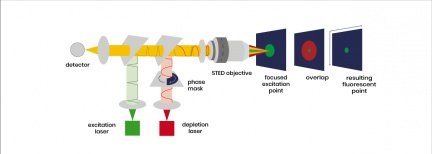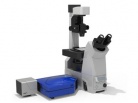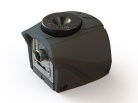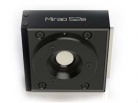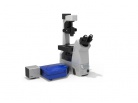STED (STimulated Emission Depletion), or Stimulated Fluorescence Emission Depletion, is a variant of scanning laser confocal fluorescence microscopy with two laser beams that are focused collinearly on the same spot of the sample. One of the beams is used to excite the fluorescence (the so-called excitation beam), as in conventional confocal microscopes, while the second beam (the so-called depletion beam), which has a higher wavelength and an intermediate ring shape in cross-section (due to the use of a so-called phase mask), is used to quench the fluorescence at the edge of the area illuminated by the excitation laser. The fluorescence emission occurs only in the unquenched region inside the intermediate ring, resulting in improved resolution. The value of the resolution is dependent on the extent to which the area in which fluorescence is not quenched is reduced. STED is one of the most common methods of super-resolution localization microscopy.
